![]()
![]()
![]()
Use LEFT and RIGHT arrow keys to navigate between flashcards;
Use UP and DOWN arrow keys to flip the card;
H to show hint;
A reads text to speech;
18 Cards in this Set
- Front
- Back
- 3rd side (hint)
|
Economic methodology
|
scientific method
1. observe a phenomenon, 2. make simplifying assumptions and formulate a hypothesis, 3. generate predictions, and 4. test the hypothesis. |
|
|
|
ECONOMIC THEORIES
|
A theory consists of:
1. a set of definitions about variables 2. a set of assumptions 3. a set of predictions (or hypotheses) |
|
|
|
Models, The term model is used in several different ways:
|
1. as a synonym for a theory;
2. as a specific quantitative formulation of a theory; 3. as a specific application of a general theory; and 4. as an illustrative abstraction which helps to organize our thoughts about a particular issue. |
|
|
|
TESTING THEORIES: Rejection Versus Confirmation
|
A hypothesis can be tested and may be rejected by the data. This rejection brings the value of the theory into question.
An alternative is to search for confirming evidence for a theory. But no matter how unlikely the theory is, some confirming evidence can generally be found. |
|
|
|
Statistical Analysis
|
Statistical analysis is used to test a hypothesis such as “if X increases, then Y will also increase.”
Economists are compelled to use millions of “uncontrolled” experiments that are going on every day in the economy. These activities can be observed and recorded continuously, producing a mass of data. The analysis of such data requires the use of appropriate -- and often quite complex -- statistical techniques. |
|
|
|
Correlation Versus Causation
|
Positive correlation means only that X and Y move together.
Negative correlation means that X and Y move in opposite directions. But X and Y may not be causally related. Or they may be related in the opposite way to what is expected -- reverse causality. Most economic predictions attempt to establish causality. Statistical tests often attempt to distinguish between correlation and causality. |
|
|
|
The Interaction Between Theory and Empirical Observation
|

|
|
|
|
ECONOMIC DATA-Index Numbers:
|
Index Numbers: Used to compare changes in some variable relative to some base period.
Another famous index that is reported everyday on the news is the S&P/TSX, an index number showing the average value of company stocks traded on the Toronto Stock Exchange. For more information about the S&P/TSX index, look for “What the S&P/TSX Really Measures” in the Additional Topics section of this book’s MyEconLab.” |

|
|
|
Graphing Economic Data
|
Economic variables usually come in two basic forms:
1. Cross-sectional data 2. Time-series data A scatter diagram is a useful and common way of looking at the relationship between two variables. |
|
|
|
A Cross-Sectional Graph
|
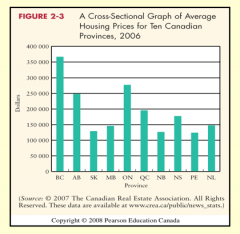
|
|
|
|
GRAPHING ECONOMIC THEORIES-A functional relation can be expressed:
|
1. in a verbal statement
2. in a numerical schedule (a table) 3. in a mathematical equation 4. in a graph |
|
|
|
Functions
|
Consider a relationship between a household’s annual income, Y, and its total consumption, C.
We use a symbol to express the dependence of one variable on another. C = f(Y) “C is a function of Y” -- we also say “the amount of consumption expenditure depends upon the household’s income.” |
|
|
|
Graphing Functional Relations
|
The relationship between two variables may be positive or negative.
If the graphs of these relationships are straight lines, the variables are linearly related to each other. Otherwise, variables are said to be non-linearly related. |
|
|
|
Algebra and graphical analysis
|
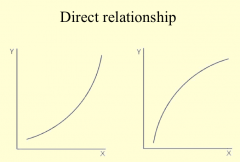
|
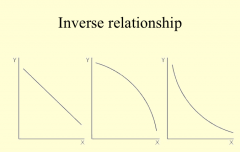
|
|
|
Four Linear Relationships
|

Linear relationships
|
Let X be the variable measured on the horizontal axis and Y be the variable measured on the vertical axis.
The slope of a straight line is then ΔY/ΔX. |
|
|
Linear relationships
|

If an equation can be written in the form: Y=mX+b, then:
m = slope, and b = Y - intercept. |
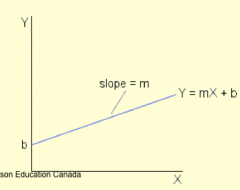
|
|
|
Non linear relationships
|
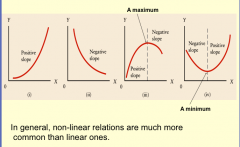
|
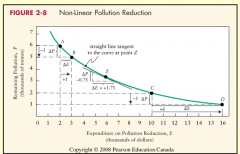
|
|

|
?
|
|

